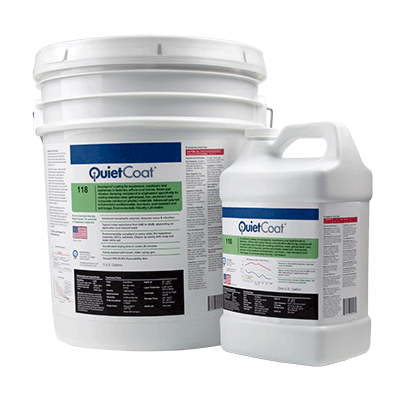Key Steps in Residential Soundproofing
Your home should be a peaceful place. It’s hard to relax and enjoy yourself if your home is a cacophony of unwanted noise, though! More and more homeowners are taking a keen interest in residential soundproofing these days. Whether they are building or renovating, these individuals are taking measures to keep sound from traveling easily from room to room, making for a more tranquil and enjoyable setting.
When to Soundproof
You might assume that there’s nothing you can do to stop unwanted sound transmission until you are in the middle of a major renovation. This is far from the case! In fact, sound behaves a lot like hot or cold air; it seeps through cracks and vulnerabilities in your home’s walls and ceilings. This means you can do a lot to reduce noise transmission without tearing open your walls.
Doors and windows need to be weatherstripped to reduce sound transmission through the gaps around them. Weatherstrip your interior doors too. The best material for this is high-density foam tape specifically designed for soundproofing. Whenever you have a minor repair job that involves penetrations in your walls, make sure you finish it off by fully sealing the gaps with acoustic caulk. Consider replacing hollow interior doors with solid-core ones to cut down on sound propagation.
The more extensive soundproofing measures described below are best performed during new home construction or major renovations. If soundproofing is especially important to you, make sure you discuss it with potential professional home contractors before hiring them.
Floors and Ceilings
Take a look at your floors and ceilings to reduce sound propagation even if you don’t live in a two-story home. Softer, more sound-absorbent materials will reduce the amount of noise generated in any room. Less noise generated means less noise transmitted to other rooms.
Use carpet on floors wherever you can. Make sure your carpet is under laid with an ample carpet pad that has a good STC (Sound Transmission Class) rating. Consider installing acoustic tiles on your ceilings; these absorb a great deal of noise and prevent it from spreading. When it comes to ceiling construction, you can use many of the same techniques described below for building more soundproof walls.
Walls
Building more sound-resistant walls is the most important part of building a soundproof home. Sheer mass is the best sound blocker available to you. If you are building from the ground up, consider using heavier materials (e.g. masonry units) to build your external walls.
There are two major techniques you can use to improve a wall’s sound-blocking capability during construction or renovation. The first is installing batt insulation between your wall studs. Insulation expressly designed for sound isolation can cut the amount of sound that seeps through your walls by at least a quarter.
The heavy-duty way to soundproof your walls is to make the gypsum wallboard layers thicker. A second layer of 5/8″ wallboard on both sides of an internal wall will improve its sound-absorbing qualities by another 25 percent.

Quiet Coat is spray-able, and can be used on steel (iron, galvanized, stainless), brass, aluminum, alloys, copper, PVC, composites and other nonporous materials. Click to learn more!
Equipment and Appliances
To return to an earlier point, one of the best ways to cut down on sound transmission is to minimize the amount of unwanted sound you have to deal with. You can do this by selecting and placing appliances and equipment with an eye on reducing their noise levels.
During construction or renovations, install an insulated length of flex duct in between each heating and ventilating register and the metal duct it connects to. This will cut down on the amount of furnace rumble and AC noise that gets into your living spaces. Use good pipe isolators and pipe hangers in your plumbing system (especially where pipes pass close to living areas) to cut down on noises caused by running water.
When you are buying or replacing appliances, bear in mind that you do get what you pay for. Higher-end appliances are generally much quieter when they are operating. For continuous appliances like refrigerators, this can make a huge difference in your home’s overall noise level. Leave a generous gap between appliances and interior walls when possible to reduce the amount of sound that penetrates.
Although some of the most effective soundproofing measures require a lot of intensive work, they do make an enormous difference in how much noise spreads from room to room. Remember, even if you are not in a position to launch a major renovation, there are still steps you can take to make your home quieter.
About the Author
Joe Crivello is the owner of AmeriDry, assisting customers with water damage and mold removal and inspection. In business for 25 years, he firm is IICRC certified and holds an A+ rating with the Colorado Better Business Bureau. If you are in Colorado and need assistance with water or mold damage, learn more by visiting ameridri.com.




